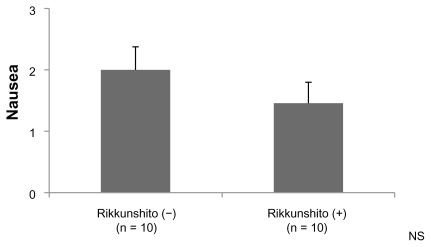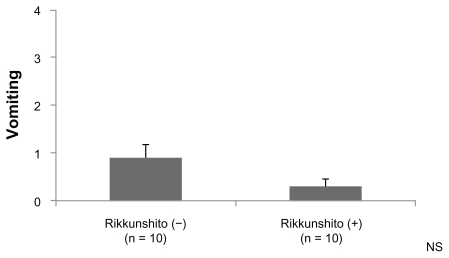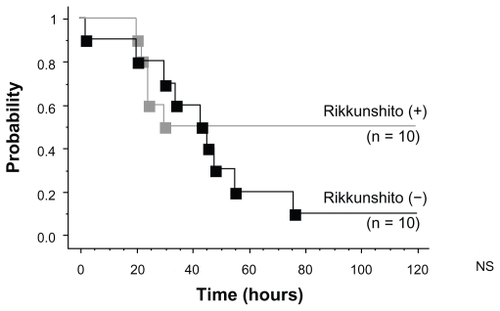Figures & data
Figure 1 Crossover study design. Patients in group A initially took oral Rikkunshito before every meal for 3 weeks (on treatment). After a rest period of 2 weeks, Rikkunshito was discontinued for 3 weeks (off treatment). Conversely, patients in group B initially were off treatment for 3 weeks and then on treatment for 3 weeks after the rest period.
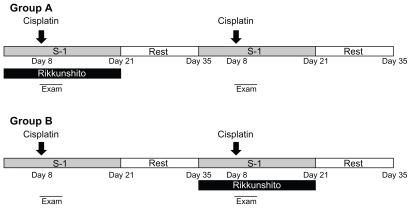
Table 1 Background of patients
Figure 2 Plasma concentration of acylated ghrelin. In the Rikkunshito-on period (Rikkunshito [+]), no decrease of plasma concentration of acylated ghrelin was observed before and after administration.
![Figure 2 Plasma concentration of acylated ghrelin. In the Rikkunshito-on period (Rikkunshito [+]), no decrease of plasma concentration of acylated ghrelin was observed before and after administration.](/cms/asset/c4df9260-6145-4cea-a21f-e0a2331511dc/dceg_a_26297_f0002_b.jpg)
Figure 3 Comparison of the amount of oral intake. The average oral intake in the Rikkunshito-on period was significantly larger than that in the Rikkunshito-off period.
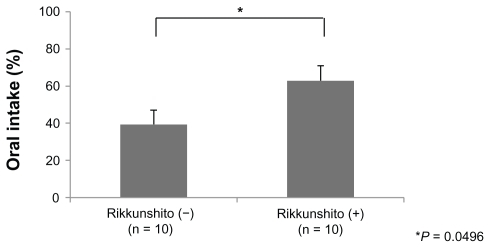
Figure 4 Comparison of the grade of anorexia. The grade of anorexia (0–4) was significantly lower in the Rikkunshito-on period than in the Rikkunshito-off period.
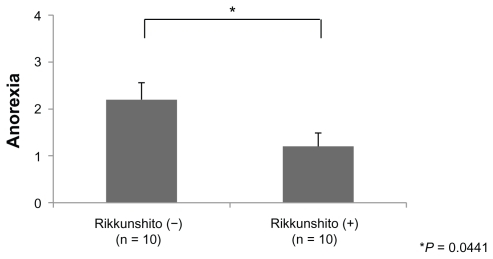
Figure 5 Comparison of the grade of nausea. The difference in the grade of nausea (0–3) was not significant.
